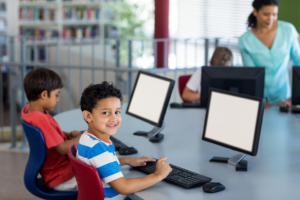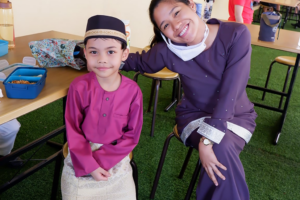
How to Use Technology Wisely in Your Child’s Education
Technology is an integral part of modern life, and its role in education continues to grow. From digital learning tools to interactive apps, children
Arts education at Cambridge fcurriculum schools encompasses diverse disciplines, including visual arts, music, theatre, and dance. They allow students to explore their creativity, express themselves, and cultivate analytical abilities with active participation in diverse artistic forms.
Creativity is essential for personal and professional development, fueling imagination and finding solutions. It promotes self-expression, resilience, and adaptation while improving mental agility and well-being.
In the business world, creativity supports entrepreneurship and promotes leadership. It allows individuals to negotiate complexity, predict possibilities, and inspire positive social change. This article will discuss the importance of art education in schools to offer a holistic learning experience.
Arts education sparks imagination and fosters creativity by offering a platform for inquiry and experimentation. It encourages students to face obstacles with innovation, shaping their bright future and resulting in a dynamic society. Here are a few ways art education enables creativity in children of ECA & Student clubs:
Art education can broaden perspectives by exposing students to diverse creative expressions like painting, music and theatre. By experimenting with different mediums, they discover new ways to express themselves, boost technical skills, enhance their artistic journeys and instil a lifelong admiration for the arts.
Schools can help students discover their true potential by pushing them to think beyond the box and embrace their creative talents with art education. With innovative activities, students gain the courage to express themselves openly,
create boldly, and bring new views to the world, establishing an atmosphere of creative brilliance.
Art education embraces creative expression as a powerful outlet for students to express their inner thoughts, feelings, and experiences. Learners use artistic media to explore and define their identities, developing confidence in their voices. It encourages acceptance, comprehension and connection within their communities.
Educational institutes create a culture of fearless exploration, inspiring students to break boundaries, challenge standards and experiment boldly. By accepting failure as a vital component of the creative process, children learn resilience, flexibility, and a desire to innovate, establishing the framework for transforming artistic expressions.
The below section dives into the substantial effects of artistic involvement on cognitive development. Analysing the connection between art and cognition shows how arts education can enhance learning and improve cognitive capacities across multiple fields.
Art education improves memory by involving students in active learning games that stimulate multiple senses and cognitive functions. Drawing, painting, and storytelling help students effectively store knowledge, resulting in increased memory. Regular exposure to creative concepts builds brain connections, allowing for long-term retention of information.
Art education fosters the capacity for problem-solving by presenting learners with creative difficulties that require unique solutions. They learn to think outside the box in the face of challenges through improvisation and collaborative projects. It encourages resilience, adaptability, and an openness to consider unconventional solutions.
Schools can help children develop mental agility by encouraging them to experiment with different artistic approaches, styles, and views. They learn to approach challenges from diverse perspectives, adjust their perceptions to new conditions, and accept contrasting viewpoints upon exposure to various artistic forms and interpretations.
Cambridge curriculum‘s art education promotes spatial and visual cognition by immersing students in tasks that necessitate them to navigate and analyse visual data. Drawing, sculpting, and perspective activities help students comprehend linear connections, proportions, and a sense of depth to improve their capacity to see, analyse, and solve problems.
Art education fosters empathy, communication and self-awareness for artistic expression. Students of the Cambridge curriculum learn crucial skills via creative inquiry and collaborative projects to create profound bonds, comprehension, and resilience. Here are some social and emotional abilities children can gain:
Schools can promote the expression of emotions with art instruction by offering a safe and supportive atmosphere for learners. Students learn to verbalise and process complex feelings via creative techniques like painting, writing and performing, giving them insight into their personality and the courage to express themselves.
Art education promotes empathy and adopting new perspectives by exposing students to multiple creative expressions that represent diverse cultures and viewpoints. They gain an understanding of other people’s feelings and experiences by learning and creating art from new perspectives to foster a mindset that transcends cultural borders.
Creative instruction encourages teamwork and cooperation by letting students participate in collaborative projects and performances. They teach students how to communicate their ideas, offer constructive comments and work with colleagues to achieve shared objectives. It promotes cooperation and communication skills necessary for success in diverse scenarios.
Art education fosters community participation and cultural awareness by connecting learners to their communities and cultural heritage with creative discovery. Students become sensitive to cultural diversity by exploring artistic traditions and collaborating with their community to enhance compassion, acceptance, and respect for others.
Artistic expression promotes holistic growth, leading to improved performance in school. Art education plays a critical role in facilitating balanced learning and academic performance. Listed below are a few ways it can support student’s learning journey:
Increased student involvement is an attribute of arts education as it encourages active participation and creativity. Learners become invested in their learning with hands-on experiences in various artistic mediums such as music, visual arts, and theatre. It leads to increased motivation, interest and enthusiasm for their academic journey.
Multi-disciplinary learning is the intersection of different academic disciplines to create a holistic educational experience. Students use these techniques to examine links across various areas of study, understanding the interdependence of knowledge and obtaining an improved awareness of complicated subjects. It develops the capacity to apply information in a variety of contexts.
Long-term academic success is the consistent accomplishment and progress over time, including grades and gaining critical skills and information. It includes developing the ability to think critically, solve issues, and efficient study habits, alongside cultivating a growth mindset. Long-term academic achievement prepares people for future educational and employment opportunities.
Addressing performance disparities through art education requires fair access to arts programmes and resources in underprivileged communities. Schools can engage diverse students and improve academic performance by including art in curricula, closing educational achievement gaps. Art education encourages personalised learning and overall development while providing opportunities for every student.
Arts education fosters creativity by promoting experimentation, imagination, and uniqueness. It promotes a culture of exploration and expression, resulting in well-rounded individuals capable of creatively addressing challenges. It is vital to prioritise arts education in Cambridge curriculum schools. It can assure fair access to valuable opportunities that enable children to thrive creatively in a fast-changing world.
Share

Technology is an integral part of modern life, and its role in education continues to grow. From digital learning tools to interactive apps, children

Deciding when your child is ready to start pre school is one of the first major milestones for parents. The transition from home or

British curriculum schools in Malaysia are increasingly popular among parents who want an internationally recognised education for their children. The British curriculum, used in
Interested to learn more about our campuses? Book a school tour with us!
Admissions
Working Hours
Monday – Friday 07:30 – 17:00
Saturday 08:30 – 13:00
Copyright © Regent International School. All rights reserved.

Admissions Team
Welcome to Regent International School! If you need information regarding admissions, we’re here to assist. For job-related queries, please visit our career portal.For any other enquiries, please visit our contact us page.
